
Tehran Province is one of the 31 provinces of IR IRAN. It covers an area of 18,814 square kilometres (7,264 sq mi) and is located to the north of the central plateau of Iran.

Nishapur or officially Romanized as Neyshabur is the second-largest city of Razavi Khorasan Province in the Northeast of Iran. Nishapur is situated in a fertile plain at the foot of Binalud Mountain Range and has been the historic capital of the Western Quarter of Greater Khorasan, the historic capital of the 9th-century Tahirid dynasty, the initial capital of the 11th-century Seljuk Empire, and is currently the capital city of Nishapur County and a historic Silk Road city of cultural and economic importance in Iran and the region of Greater Khorasan.

Mashhad, also spelled Mashad, is the second-most-populous city in Iran, located in the relatively remote north-east of the country about 900 kilometres from Tehran. It serves as the capital of Razavi Khorasan Province and has a population of 3,001,184, which includes the areas of Mashhad Taman and Torqabeh.

The national flag of the Islamic Republic of Iran, also known as the tricolor, is a tricolour comprising equal horizontal bands of green, white and red with the national emblem ("Allah") in red centred on the white band and the takbir written 11 times each in the Kufic script in white, at the bottom of the green and the top of the red band. After the Iranian Revolution of 1979, the present-day flag was adopted on 29 July 1980. Many Iranian exiles opposed to the Iranian government use alternate flags, including the tricolor flag with the Lion and Sun at the center, or the tricolor without additional emblems.

Amol is a city and the administrative center of Amol County, Mazandaran Province, Iran, with a population of around 300,000 people.
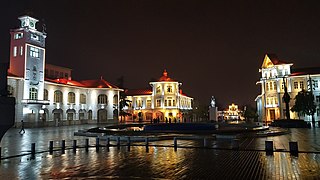
Rasht is the capital city of Gilan Province, Iran. Also known as the "City of Rain", it had a population of 679,995 as of the 2016 census and is the most populated city of northern Iran.

Karaj is the capital of Alborz Province, Iran, and effectively a satellite city of Tehran. Although the county hosts a population around 1.97 million, as recorded in the 2016 census, most of the 1,419 km2 (548 sq mi) county is rugged mountain. The urban area is the fourth-largest in Iran, after Tehran, Mashhad, and Isfahan. Eshtehard County and Fardis County were split off from Karaj County since the previous census.
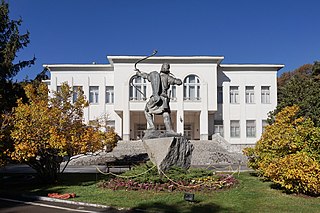
The Sa'dabad Complex is a 110 hectare complex built by the Qajar and Pahlavi monarchs, located in Shemiran, Greater Tehran, Iran. Today, the official residence of the President of Iran is located adjacent to the complex.
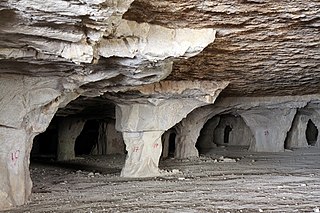
Jahrom is a city and capital of Jahrom County, Fars Province, Iran. At the 2016 census, its population was 141,634. Jahrom is the largest city in south of Fars Province and the second one in whole province.

The Iranian National Jewels, originally the Iranian Crown Jewels, include elaborate crowns, thirty tiaras, and numerous aigrettes, a dozen bejeweled swords and shields, a number of unset precious gems, numerous plates and other dining services cast in precious metals and encrusted with gems, and several other more unusual items collected or worn by the Persian monarchs from the 16th century and on. The collection is housed at the Treasury of National Jewels, situated inside the Central Bank of Iran on Tehran's Ferdowsi Avenue.
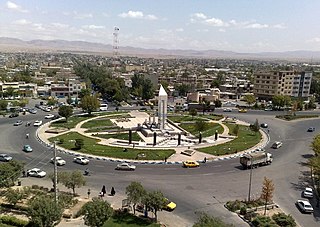
Quchan is a city and capital of Quchan County, in Razavi Khorasan Province, Iran. It is located due south of the border city of Ashgabat. At the 2006 census, its population was 96,953, in 25,066 families.

Chenaran is a city and capital of Chenaran County, in Razavi Khorasan Province, Iran. At the 2006 census, its population was 41,735, in 10,179 families.

The Lion and Sun is one of the main emblems of Iran (Persia), and was an element in Iran's national flag until the 1979 Iranian Revolution and is still commonly used by opposition groups of the Islamic Republic government. The motif, which illustrates ancient and modern Iranian traditions, became a popular symbol in Iran in the 12th century. The lion and sun symbol is based largely on astronomical and astrological configurations: the ancient sign of the sun in the house of Leo, which itself is traced back to Babylonian astrology and Near Eastern traditions.

Sepahbod Nader Jahanbani was an Iranian general, distinguished fighter pilot of Imperial Iranian Air Force (IIAF) and the deputy chief of the IIAF under Mohammad Reza Shah Pahlavi, the last Shah of Iran. Despite being executed in 1979 by Islamic Revolutionaries, he is widely lauded as the "father of the Iranian Air Force" along with General Mohammad Khatami and General Amir Hossein Rabii, for modernizing the air force to become a potent and powerful force whose advanced equipment and training they acquired for Iran, such as the F-14 Tomcat, would save Iran's crucial infrastructure during the Iran–Iraq War. He was the Leader of the Golden Crown, the first and national aerobatics display Iranian team. He is nicknamed the "blue eyed general of Iran". By many accounts, he is considered one of the best and most capable pilots of his time.
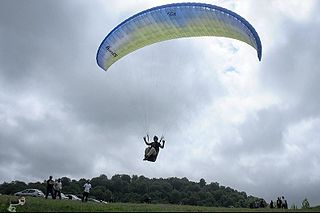
Tourism in Iran is diverse, providing a range of activities from hiking and skiing in the Alborz and Zagros mountains, to beach holidays by the Persian Gulf and the Caspian Sea. The Iranian government has made concerted efforts to attract tourists to the various destinations in the country and arrivals have increased in recent years.
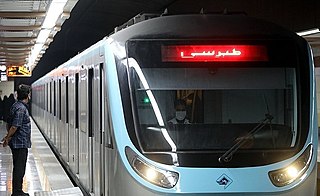
Mashhad Urban Railway is a rapid transit urban rail line in Mashhad, Iran. It is the second rapid transit system in Iran. The project has been known by a number of terms, including "light rail" or "light metro" and "urban rail" or "metro", though the system's full-grade separation from traffic and five-minute headway fully qualify it as a rapid transit or "metro" system. Mashhad Urban Railway operates its line 1 from 6 to 22:00 daily. Construction of the second line which is a metro line is ongoing. Limited operation of the first phase of line 2, with 10.1 kilometres (6.3 mi) and 9 stations, had just begun in Feb 2017. tunnel excavation of the first phase of line 3 was started in 2015.
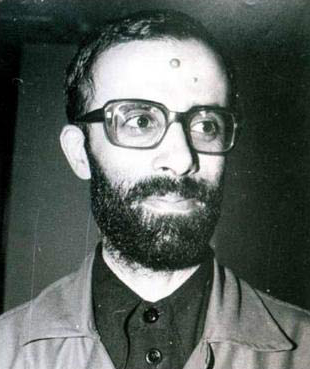
Yousef Kolahdouz was an Iranian general during the Iran-Iraq War. He is also counted as one of the founders of the Islamic Revolutionary Guard Corps. He became deputy commander of what was then known as the "Iranian Revolutionary Guards" shortly after the Iranian Revolution.
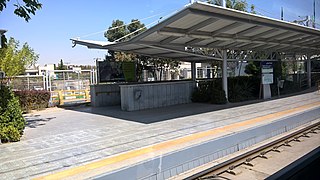
Sayyad-e Shirazi Metro Station is a station of Mashhad Metro Line 1. The station opened on 10 October 2011. It is located on Vakilabad Expressway.

Mashhad railway station is located in Mashhad, Razavi Khorasan, the second largest city of Iran. The station is owned by IRI Railways, and was designed by Heydar Ghiai.
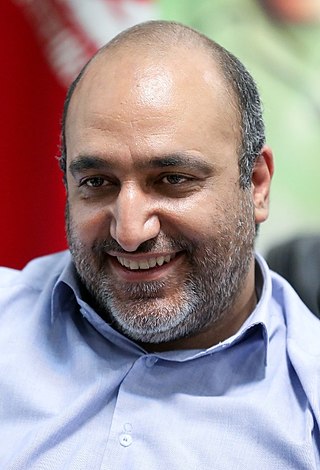
Mohammad Reza Kalaei is an economist who has been working for the last time as the Director of Sarakhs Special Economic Zone. He previously worked as the mayor of Mashhad.

























